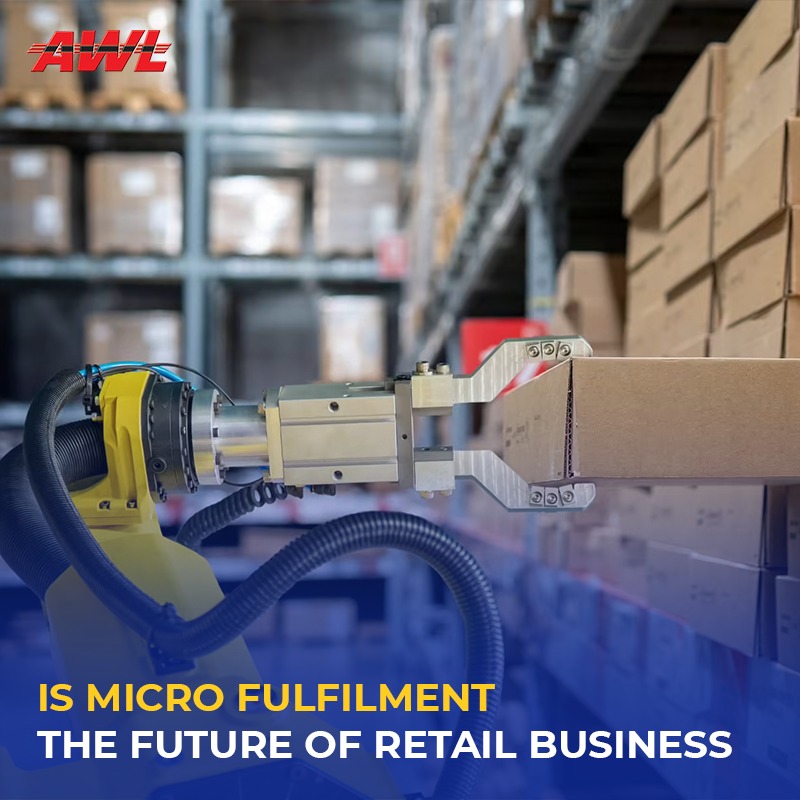

The term cold chain refers to a temperature-controlled supply chain designed to ensure that products (such as temperature-sensitive foods, beverages, and bio-pharmaceuticals) in transit are within a specified temperature range to protect their integrity. Ensuring that products are in good condition upon delivery can often be a challenge.
Cold chain logistics do not start when a product is loaded onto an airplane or truck. It impacts every step of the supply chain, from procurement to shipping, warehousing, and last-mile delivery. Temperature-sensitive foods must be stored at a specific and constant temperature.
During this process, the cargo is exposed to an increase or decrease in temperature, which can cause disaster for the cargo being transported. Every year goods are lost, especially within the pharmaceutical market, but we also see tons of risk within the perishable sectors.
Cold chain logistics include the right packaging, the right transport equipment, carefully chosen delivery routes, correct timing, and perfect visibility right from the purchase till the delivery.
The rise of cold chain logistics is a direct result of the growth of international trade and supply chains. The growing need for the safe transport of temperature-sensitive products over long distances has led to the emergence of cold chain logistics. With a better standard of living, especially in developed countries, people are more aware of the quality and demand for fresh produce. Cold chain logistics are a vital part of any successful modern supply chain solution today.
You may wonder what the “chain” is in the cold chain! There are multiple elements or links in the chain in moving the refrigerated goods from door to door in real-time. If the temperature drops in any part of the manufacturing process, the life or quality of this product will decrease, and it can be thrown away. This results in a loss of money for both shippers and cold chain companies with whom they do business. A proper cold chain keeps a product within a controlled temperature range from start to finish.
The cold chain ensures the safety and high quality of perishable food at the time of consumption. Failure to comply with the temperature of the product may result in poor texture, discoloration, bruising and microbial growth. A good quality product always leads to a satisfied customer, higher demand, and overall protection of public health. Cold chain providers also contribute greatly to the economy and workforce.
Manufacturers understand the importance of keeping food at a specific temperature throughout the sales cycle. Some products are able to withstand temperature extremes, while others become unsafe even with the slightest deviation.
These deviations are known as the “tolerance” of products in the industry and are the basis for error correction by logistics and cold chain manufacturers. However, some products have no tolerance, even the smallest step from the start of the set temperature will result in the loss of the entire order.
Temperature-sensitive foods that are subject to environmental changes will have a negative impact on safety, quality, taste, and potency. Cold chain logistics helps reduce these problems and allows manufacturers and suppliers to better control their products through the supply chain to the end-user.
Cold chain logistics management is not as easy as it might seem. Frozen food companies face a myriad of challenges in ensuring that goods are transported safely and undamaged. Some common challenges are listed below:
1. Damaged Equipment - Unforeseen equipment failure is one of the biggest challenges in cold chain logistics. Power outages or power fluctuations can cause malfunctions of the switched-on refrigeration system. Refrigerant failure and poor cold circulation can also affect cold chain logistics management. Damaged freezer doors are also one of the most common problems faced by refrigerators.
The initial effect of a damaged door is that it cannot maintain the set temperature. If the damage is left untreated, the direct consequences of damage will lead to a number of common cold chain problems that can affect worker safety, consumer safety, and ultimately business relationships and their values.
2. Excessive heat exposure - Sometimes problems arise even before the temperature-sensitive item enters the freezer or refrigerator. Prolonged exposure to warm external temperatures while handling them is a common problem that can spoil food, pharmaceuticals, and other heat-resistant products.
3. Damaged Products - Improper placement of products and improper temperature in trailers can damage the shipments and affect profits, so it is imperative to support them with technology platforms or hire specialized professionals to service your cargo.
Transport problems range in cold chain logistics, from damaged products and products exposed to unacceptably high temperatures in trailers. The best way to secure goods in transit is to use RFID tracking technology. This can alert the recipient to the problem so that they are ready to correct the situation.
4. Human Mistakes - Cold chain logistics management is not like ordinary logistics management. It requires highly qualified specialists who are familiar with all processes and protocols. In addition, professionals must also have experience practical experience in operating various warehouses and transport equipment in cold conditions. Mishandling, wrong practice, and inadequate documentation can cause more problems and increase the cost of cold chain logistics.
5. High Cost - As mentioned above, cold chain logistics management is not ordinary management, you need to invest a lot to get the right equipment and fleet, and also hire a third-party logistics provider for this purpose. This goal is also costly, which is one of the biggest challenges facing cold storage companies.
Third-party logistics companies take off the burden of cold chain compliance from manufacturers, at least when it comes to the delivery of their goods. These cold chain logistics companies offer exceptional expertise in temperature-sensitive goods transportation.
Integrating and controlling the various elements of the supply chain is the key to cold chain logistics that requires a lot of data. This data cannot be sorted manually. The data points keep changing constantly. Instead, cold chain logistics companies are encouraging data science and smart technology to bring order to an often chaotic process.
Logistics is a particular area where data science can make a significant impact in a number of areas, such as reducing waste products and optimizing shipping routes that can lead to shipping costs. Data science is transforming logistics like almost any other industry. If data science is used correctly, it allows organizations to gather information and visualize their transport network before anything is sent. It enables you to make decisions with greater precision and better quality.
The environment also directly affects the logistics of the cold chain where the goods are stored. Using data collected through historical and predictive weather models, cold chain logistics companies can calculate the risk specific to each individual shipment. This data allows planners to make decisions wisely about shipping methods, delivery times, and device selection.
Nowadays, companies have become more data-driven, machine sensors and digital sales are generating exponential amounts of data that are ready for use and analysis. Many products encourage users to generate valuable data, which can then be monetized by providing valuable insights.
This allows you to assess the value of a particular product to the enterprise and the organization's ability to leverage valuable data. Data-driven businesses have a significant impact on the supply chain. The use of data in the supply chain spans the entire spectrum of ecosystem processes and operations, from planning and procurement to customer compliance, including warehousing and transportation.
Integrated data is the best that companies have to control the quality of the shipment. Connecting multiple dots creates a clear picture that instantly influences decision-making. Companies can be more agile and proactive while delivering better customer service. Cold chain logistics delivers this data and experience, leveraging it to save costs, improve reliability and reliability, reliability of supply, and adhere to stringent quality standards.
As demand for cold chain logistics grows, companies must consider many factors to reduce costs without compromising quality and speed to market, whether it is choosing the right delivery method, the right shipping route or route, choosing refrigeration equipment, or considering adjusting delivery dates. Based on the known risks, organizations are better equipped than ever to make informed decisions.
Knowing who and what is in a company's supply chain is essential to understanding what's going on in the supply chain, and to track and identify high-risk events and activities. Without proper transparency and traceability in the supply chain, it is impossible to understand and therefore manage risks and reduce the likelihood of adverse events.
Goods moving through the supply chain can be assessed for many reasons. It is important to restrict this access to only what is necessary for these elements to perform their functions, and to monitor this access for impact on the supply chain.
Buyers and suppliers need to share data and information. Content shared by them can be delicate information about the use of items, users, acquiring organizations, or suppliers, and information about issues that have been identified or raised with respect to specific items. Information should be protected according to mutually agreed methods.
Using design concepts is a common approach to ensuring reliability, quality, safety, diversity, and many other principles that can help manage supply chain risk. Design techniques apply to supply chain components, component processes, information, systems, and organizations.
A robust supply chain risk mitigation strategy cannot be implemented without attention to employee training in supply chain management, operational and technical policies, procedures, and controls.
Cold chain logistics companies need to understand the risks each shipment faces, possibly in terms of weather, infrastructure, natural disasters, and other areas that could disrupt or affect the quality or quantity of the cargo and may result in delayed delivery, damage or loss.
Collecting data is great, but the way it is visualized makes it usable. It's one thing to look at such data in a spreadsheet or report and try to understand it.
Businesses can be more agile and proactive while providing better customer service. Cold chain logistics provides this data and experience to learn how to use it to save costs, improve the reliability of supply, and meet stringent quality standards. Even if the contents of the package are identical to the previous one, each package is different because it corresponds to different circumstances.
However, in such cases, there is less chance of undermining or jeopardizing its integrity. Without data, companies go blind. They are susceptible to changing weather conditions, road conditions, and more. As logistics grows, companies must consider many factors in order to reduce costs without sacrificing quality and time-to-market.
By choosing the right delivery method or route of delivery, choosing refrigeration or not, or adapting delivery dates to known risks, organizations are more prepared than ever to make informed decisions.
Also Read: What are Potential Risks in Cold Chain Management?
Also Read: Top Trends in Cold Chain Logistics

